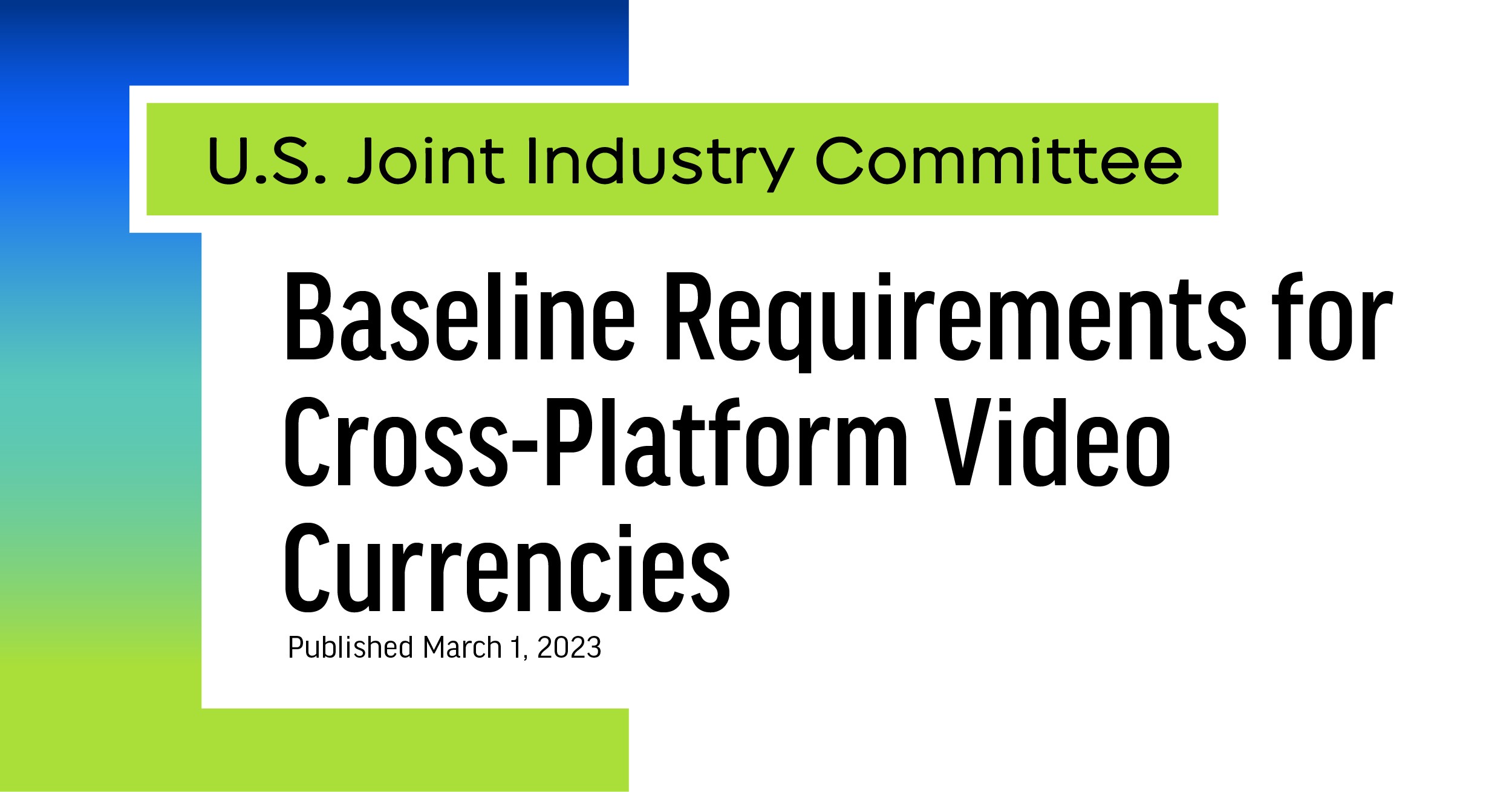Media Agencies Join Programmers In Setting Measurement Standards
Roku first streamer to join Joint Industry Council, which aims to certify vendors in time for 2024 broadcast year

The top media buying agencies have joined with most major programmers in setting standards for currency-level media measurement and the key measurement companies have been invited to be certified that they can meet those standards.
GroupM, Publicis Media, Omnicom Media Group, IPG Mediabrands and RPA have become part of the working group that will be making decisions and certifying vendors for the U.S. Joint Industry Committee (JIC) on media measurement.
The JIC’s said it aims to establish the suitability of vendors ahead of the 2024 broadcast year, which begins Oct. 1
The JIC was announced in January by Comcast NBCUniversal, Paramount Global, Warner Bros. Discovery, Fox and TelevisaUniversal. Since then A+E Networks, AMC Networks, Hallmark Media and streamer Roku have signed on. Smaller programmers are represented by the VAB.
While buyers and sellers both largely agree that the new approaches to measurement are necessary in the new multi platform television environment and that they need alternatives to Nielsen, which has long dominated the business, media buyers initially raised questions about a programmer-led initiative. Under the current set up, buyers will have 50% of the decision-making power on the JIC’s working groups.

Significantly not signed up for the JIC is The Walt Disney Co., which launched the alpha version of Nielsen One; YouTube, added to Nielsen’s total ad ratings last year; Amazon, which hired Nielsen to measure Thursday Night Football but released its own numbers after every game; and Netflix, which signed up with Nielsen to measure its new ad-supported basic product.
The programmers plan to structure the JIC as a non-profit entity and will provide its funding. While it will establish standards and certify vendors, none of the members have committed to using only vendors that are certified.
The smarter way to stay on top of broadcasting and cable industry. Sign up below
The JIC is being managed by OpenAP, the advanced advertising company owned by NBCU, Paramount, Fox and WBD. It has invited Nielsen, iSpot.tv, Comscore, VideoAmp, Innovid’s TVSquared and 605 to participate in the certification process.
A Nielsen spokesperson said it is reviewing the JIC’s invitation.
“The industry collaboration around measurement standards is important for fostering choice and setting the baseline needed for the adoption of cross-platform measurement,” said Sean Muller, CEO and founder of iSpot. “Doing so will help brands make better decisions, meet their KPIs and ensure integrity, interoperability and transparency throughout the entire ecosystem.”
“The industry is rapidly moving towards a multi-currency world, and while we are still in the early days of the JIC, the conversation being had today is a positive advancement as we work to innovate more effective currency methodology for outcomes like in-target reach, deduplicated frequency, conversion, incrementality or omni-screen engagement that matter most to advertisers,” said Ashwin Navin, Founder and CEO of Samba TV. “We look forward to being an active participant in the development of the standards and ultimately a core provider of the viewership data needed to develop future currencies.”
The requirements the programmers and media agencies agreed on concern the importance of using big data, technology & infrastructure requirements, interoperability, privacy, transparency, governance and transaction flexibility, cross-platform measurement and cross-media transparency, media integration and stewardship.
In a collective statement, executives from the agencies said that standardization is critical for scaling a multi-currency future and that the JIC’s initial requirements will help better represent how people are consuming video and “spur competition and innovation in measurement.”
OpenAP CEO David Levy told Broadcasting+Cable that he’s sees substantial progress made in a short period of time.

“Having both buy and sell entities coming together and working hand-in-hand to get a set of requirements out in an expedited time frame has been really impressive to see,” Levy said. I’m kind of proud of this industry that it's able to put down its competitive gloves for a minute and really work on some of the key, important, hard initiatives that will really drive this industry forward into the future.”
The initial set of standard are fairly broad. For example, they call for big data to be at the center of cross-platform measurement. Some of that data will be digital streaming and ad exposure data provided by the JIC. Measurement should be fully inclusive of diverse segments with the census or panel used to correct biases and calibrate the big data. They call for demo, household and advanced audience segments and for the ability to separately report out by different inventory type (premium video versus user generated content or socal content).
Also Read: Premium Predicament: What’s Being Measured Is as Important as Who Measures It
Programmers are concerned about using the same measurement regime on both professionally produced “premium content” and the user generated content found on YouTube, TikTok and other social media platforms. Levy said defining premium content provide tricky and that the JIC was leaning toward focusing on long-form content. “ You will see discussion here around quality metrics so that we start to differentiate different types of content,” he added.
The standards also call for flexibility to enable more than one metric beyond the standard, including spot level, second-by-second transaction, and duration weighted metrics.
Levy called the initial standards “a living document,” saying there’s already subcommittee empowered to field amendments.
Levy was asked if it was possible a measurement company, including one that has dominated the industry for decade, could respond by claiming it already meets the JIC’s standards.
Levy said the JIC plans to have an audit process for some claims. (That audit is separate from one that will audit the streaming data coming from the programmers).
Levy said that the JIC’s certification program is not a substitute for the Media Rating Council, which accredits measurement companies by auditing their methodologies. The JIC’s standards include telling companies seeking certification that they should seek MRC accreditation.
Levy said that he would love to have Disney involved in the JIC. As for Nielsen, “we are really optimistic that Nielsen will work actively with us as the leader in the measurement currency space at the moment. I think we have to be actively engaged with them in all aspects of what we’re doing,” he said. “If they're able to meet all these requirements from a cross platform perspective, I think that'll be great for the industry so we'll be excited to embrace that it when and if that comes to pass
Given the tight deadlines involved, the JIC plans to move quickly to grand some “conditional certifications,” Levy said. “And then from there we can go into a more detailed audit and ultimately reach a full certification.”
Given antitrust considerations, “there are no hard requirements that any of the entities involved have to follow these certifications or fall into any business practice, " Levy said. “Everybody will make an individual decision.” ■
Jon has been business editor of Broadcasting+Cable since 2010. He focuses on revenue-generating activities, including advertising and distribution, as well as executive intrigue and merger and acquisition activity. Just about any story is fair game, if a dollar sign can make its way into the article. Before B+C, Jon covered the industry for TVWeek, Cable World, Electronic Media, Advertising Age and The New York Post. A native New Yorker, Jon is hiding in plain sight in the suburbs of Chicago.

